Submitted by South Sound GREEN
In the face of COVID-19 and recent stay at home order, parents and guardians may find themselves looking for activities that not only keep students engaged, but also provides information about local environmental science and concerns. In our South Sound GREEN Home Based Science Project series, we will introduce and demonstrate various hands-on and at-home activities for children of all ages to do either indoors or outside!
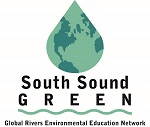 Here, we are going to look at the life cycle of Pacific salmon, and how to recreate some challenges salmon face with a fun, at-home obstacle course!
Here, we are going to look at the life cycle of Pacific salmon, and how to recreate some challenges salmon face with a fun, at-home obstacle course!
Salmon Obstacle Course
Grade Level: K-5
Materials:
- Open, safe space to move around in
- Objects that can be used as obstacles – pillows, blankets, stairs/outside hill or long hallway, etc.
- Adult pro-tip: use blue painters or masking tape to mark the course for “salmon” to follow
Background Information
Salmon have an incredible life cycle that involves thousands of miles of travel, multiple body changes, and survival tricks. Salmon are anadromous, meaning they begin their lives in freshwater, spend most of their lives in saltwater, then return to freshwater to spawn. Many species rely on salmon for their survival and are culturally significant to the Coast Salish people. Learn about the salmon life cycle and the challenges they face with this fun obstacle course that will get you moving!
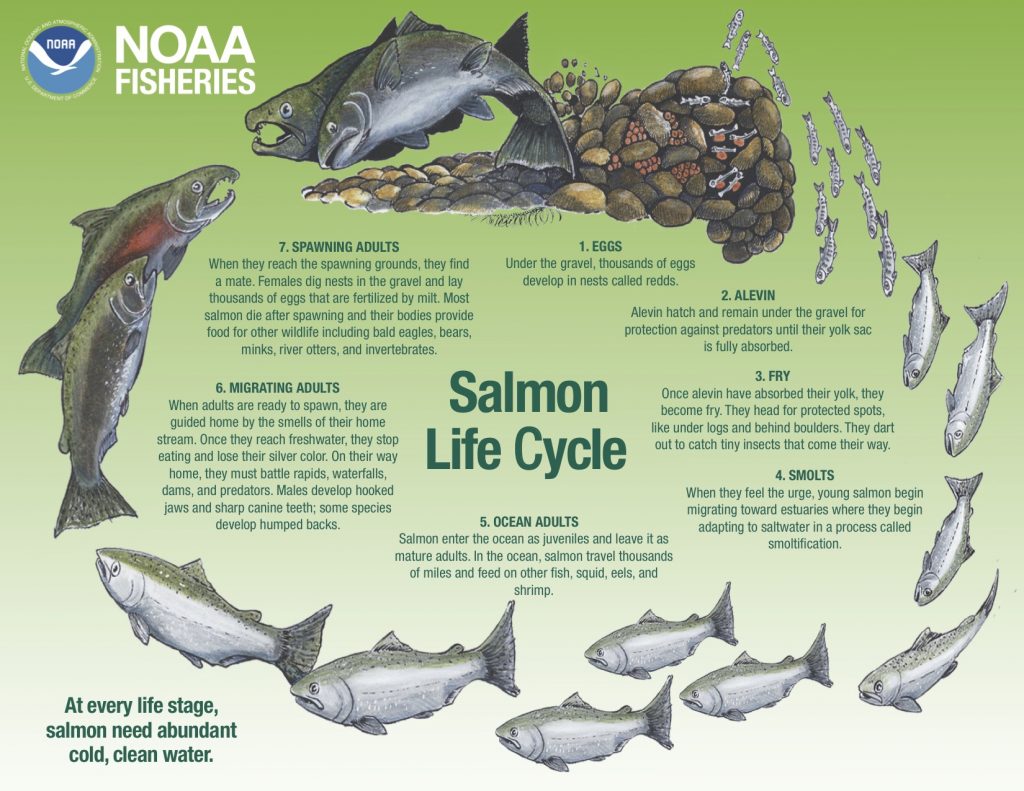
Procedure
*Keep in mind that all of these obstacles are suggestions! Get creative in coming up with your own salmon obstacles!*
- You are going to begin the obstacle course as a salmon egg, buried in the gravel.
Obstacle: Use couch and chair cushions, pillows, and blankets to make gravel. “Bury” yourself in the “gravel” and make yourself as small as you can to resemble an egg!
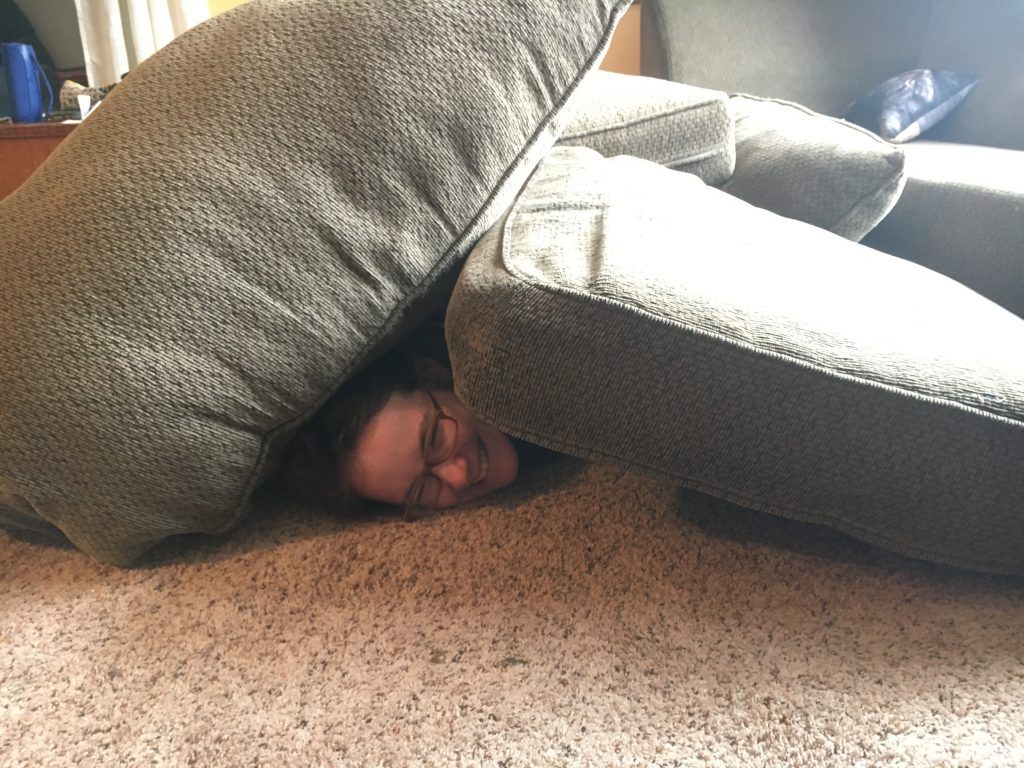
- After emerging from eggs, salmon begin their lives as tiny, defenseless alevin – baby fish that use the yolk from their eggs as food, all while hiding in the gravel of the stream bed.
Obstacle: Keeping your legs tucked into your chest, see how much you can move around. Alevin still need to stay in gravel to avoid being seen and eaten by predators.
- You are now a fry! Fry emerge from the gravel and start eating small stream bugs, but are careful not to be seen by predators.
Obstacle: Set up chairs or tables to crawl underneath. Be sneaky!
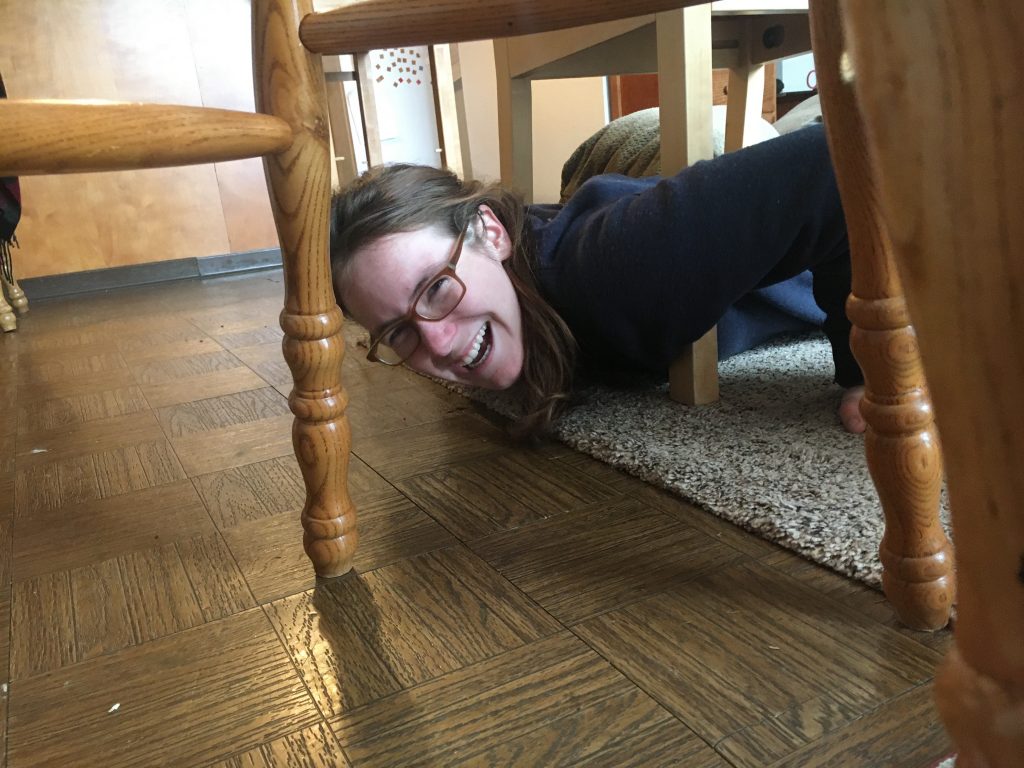
- Once salmon are big enough to make their way down river and towards saltwater and the open ocean they are known as smolt.
Obstacle: Find a staircase, nearby hill, or long hallway to run “downstream” (carefully!).
- You’ve made it to the ocean, where your body starts to change and adapt to the saltwater. As an ocean-going adult, salmon spend several years and travel hundreds of miles (or more!), growing large and fast enough to eat larger organisms such as fish, shrimp and squid.
Obstacle: Find a wide-open space to run around in, and stick two flags/markers at opposite ends of the space. Scatter tennis balls/small objects between the flags. Run back and forth between the flags, picking up a tennis ball (food!) on the way. Move fast so no larger predators (like orcas!) grab you!
- After eating all the food available, it’s time to return to your home stream to spawn. To do this, salmon use a lot of tools, including a powerful sense of smell and using the Earth’s magnetic field as a compass! Once home, they swim upstream, fighting against rushing water and leaping over obstacles.
Obstacle: Using the same staircase, hill or long hallway you went down before, climb back “upstream”. Try to do so while staying on your belly the whole time!
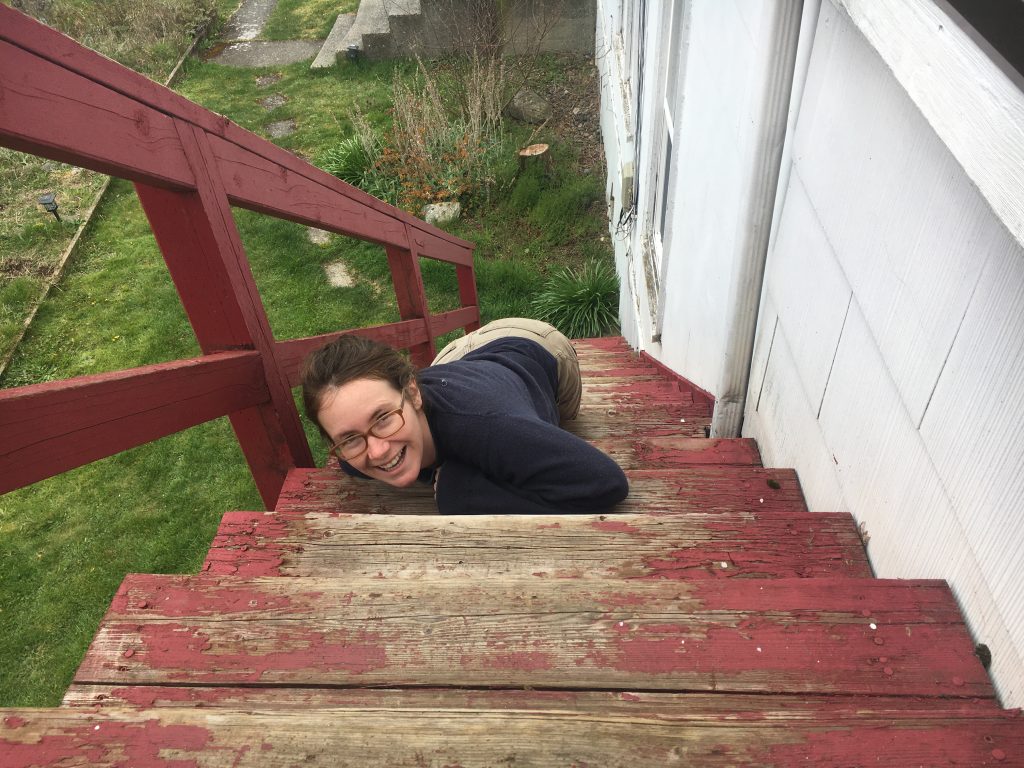
- Salmon have a lot of funny spawning behaviors! Males will fight with other males over females, while females will work to dig redds, or nests for her eggs dug into the gravel. Eventually, males and females will partner up to lay and fertilize the eggs.
Obstacle: Find your pile of cushions that you emerged from before. See if you can “dig” to the bottom of the pile without using your hands – just by flapping your whole body against the pile!
- After your successful salmon life, there’s only one thing left to do – die! Though it may seem sad, these salmon are all at the end of their lives after spawning. As salmon carcasses break down, they provide valuable nutrients to nearby plants and animals, including tiny invertebrates that might become food for new salmon once they hatch. And then the cycle starts all over again!
Obstacle: Make your best dead fish face (and take a picture, if you’d like)!
Vocabulary
(definitions from the South Puget Sound Salmon Enhancement Group)
- Anadromous: To hatch in freshwater, and migrate to saltwater only to return to have offspring in freshwater.
- Alevin: 2nd stage of the salmon life cycle; newly hatched salmon with the yolk sac still outside its body, doesn’t swim, and lives in spaces between the gravel.
- Fry: 3rd stage of the salmon life cycle; when the salmon emerges from the gravel, can swim, and no longer has a yolk sac.
- Ocean-going Adult: 5th stage in the salmon life cycle; salmon leave the estuary and head north for an average of 3-5yrs.
- Redd: Salmon nest made from a female digging in the gravel with her tail.
- Smolt: 4th stage of the salmon life cycle; when it enters the estuary.
Keep Learning!
- Play a salmon board game and more at NOAA’s Incredible Journey page!
- Complete some activities in the Salmon Homecoming Activity Book
- Check out more education resources from the South Puget Sound Salmon Enhancement Group and learn about Kennedy Creek Salmon Trail
- Become a StreamTeam Salmon Steward and teach others about salmon!
- Share your pictures with us on Instagram and see other people’s obstacle courses! Use the hashtag #GREENfromhome and find us at @southsoundgreen.
South Sound GREEN (Global Rivers Environmental Education Network) is a watershed education program in Thurston County that educates, empowers and connects thousands of local students in watershed studies annually. Through South Sound GREEN, participants engage in science and engineering practices related to water quality in South Sound. For more information, visit southsoundgreen.org.



















































